Top Aircraft Of The Korean War
North American F-28 Twin Mustang

The F-28 Twin Mustang was one of the top Korean War aircraft from the very beginning. As one of the first US Air Force aircraft to operate in the conflict, it was also one of the few available with enough range to cover the entire Korean peninsula. A twin-cockpit design based on the redoubtable F-51 Mustang, the F-28 was used extensively as an air defense fighter and additionally in a ground attack role. From 1950 to 1952, Twin Mustangs shot down 16 enemy aircraft and destroyed four more on the ground. Despite their success, they were replaced and withdrawn from service in the summer of 1952.
Lockheed F-94 Starfire

The F-94 Starfire was an all-weather day/night interceptor from the first generation of jet aircraft put into military service by the US Air Force. 855 were built and many of them saw service in the Korean War. Due to its advanced and highly classified radar system, the F-94 was disallowed from flying deep into enemy territory. However, with the need for effective bomber escorts growing, this restriction was removed in 1953. The F-94 Starfire joined the ranks of the top Korean War aircraft in both an escort and an air defense/interceptor role.
Hawker Sea Fury

The role of British airpower in the Korean War was small but vital, and the Hawker Sea Fury established a unique record during the conflict. The Sea Fury was the last propeller driven fighter in service with the Royal Navy. It also has the distinction of being the fastest single piston engine aircraft on record. Initially put into production in 1945, the Sea Fury saw service throughout the Korean War. The Sea Fury proved itself as an effective carrier defense fighter when it set a unique record during the conflict. On August 8th, 1952, a Sea Fury launched from the HMS Ocean became one of the few propeller driven aircraft to shoot down a jet fighter in combat.
Republic F-84 Thunderjet
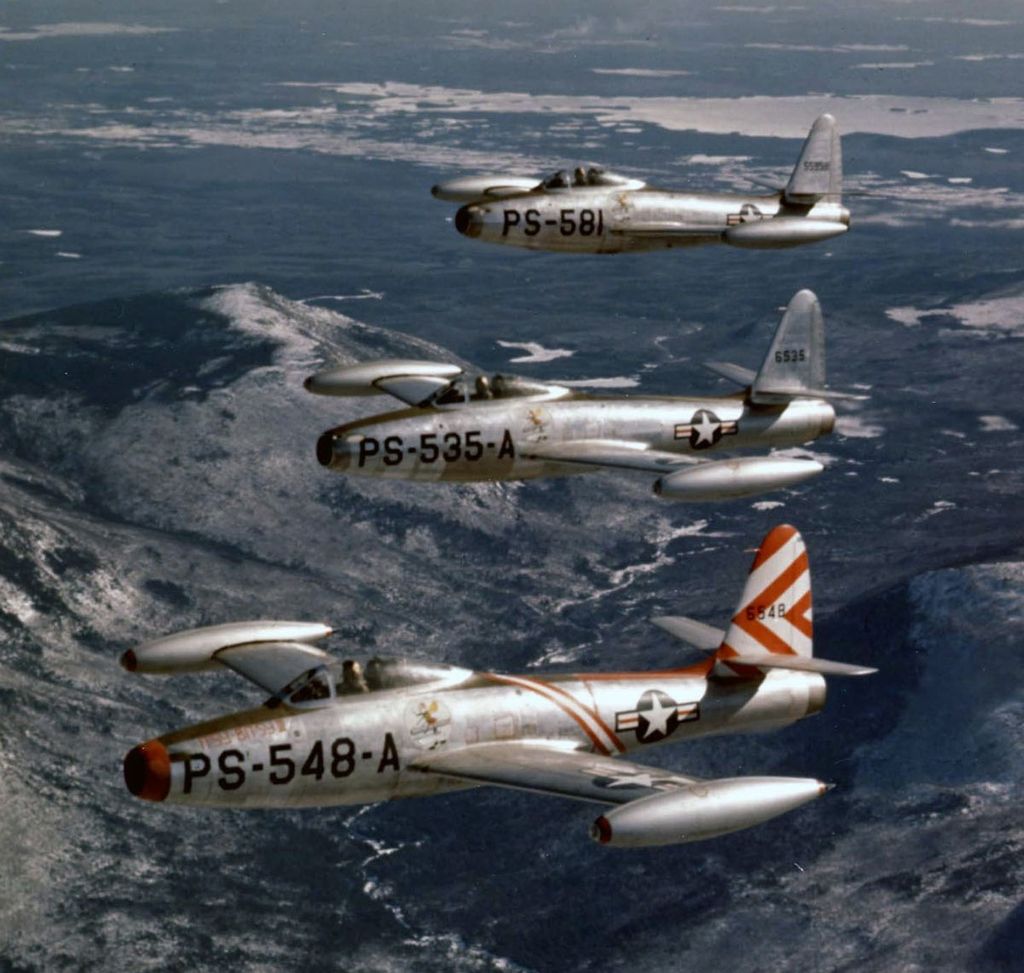
From its introduction in 1944, the F-84 Thunderjet was destined for greatness. One of the first turbojet military aircraft, it pioneered the fighter-bomber concept for the jet age. The first F-84s arrived in Korea in 1950, with the initial mission of escorting the B-29 bomber on missions into enemy territory. Ultimately, it proved too slow to keep up with enemy fighters. But the F-84 carved out a niche for itself as an effective ground attack aircraft. Its most noteworthy mission was an attack on a series of dams in North Korea. The resulting flood extensively damaged critical enemy infrastructure and hampered the Communist war effort.
North American F-86 Sabre

The F-86 Sabre isn’t just one of the top Korean War aircraft. It was the premier US fighter aircraft of the entire conflict. A transonic fighter with both air interception and ground attack capabilities, the F-86 got off to a rocky start in Korea. However, they quickly adjusted to the circumstances of the conflict and established a stunning record of wins. Over the course of the Korean War, the F-86 was credited with downing 792 enemy fighters, with only 78 losses. This 10:1 kill ratio was one of the best of all time up till that point in military history—and still impressive today.
MiG-15
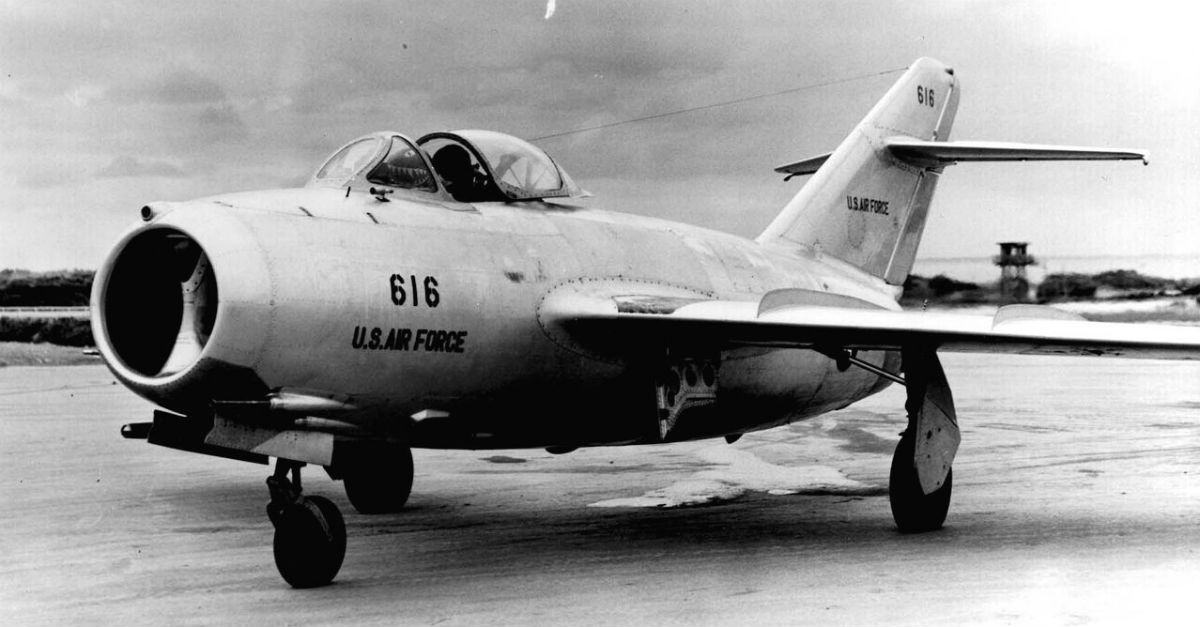
The US and its allies were not the only ones fielding the top Korean War aircraft. The DPRK and its Chinese allies had a powerful weapon in the MiG-15. The MiG-15 was one of the first successful swept-wing transonic jet-fighters. While it dominated the skies during the initial days of the conflict, the rapid advancements in US air power quickly saw the MiG-15 relegated to a ground-attack role. It performed admirably in that role and proved to be the basis for future advancements as the design was refined. As a result, MiG-15 is one of the most widely produced fighter jets of all time, with some 18,000 having been made.
Boeing B-29 Superfortress
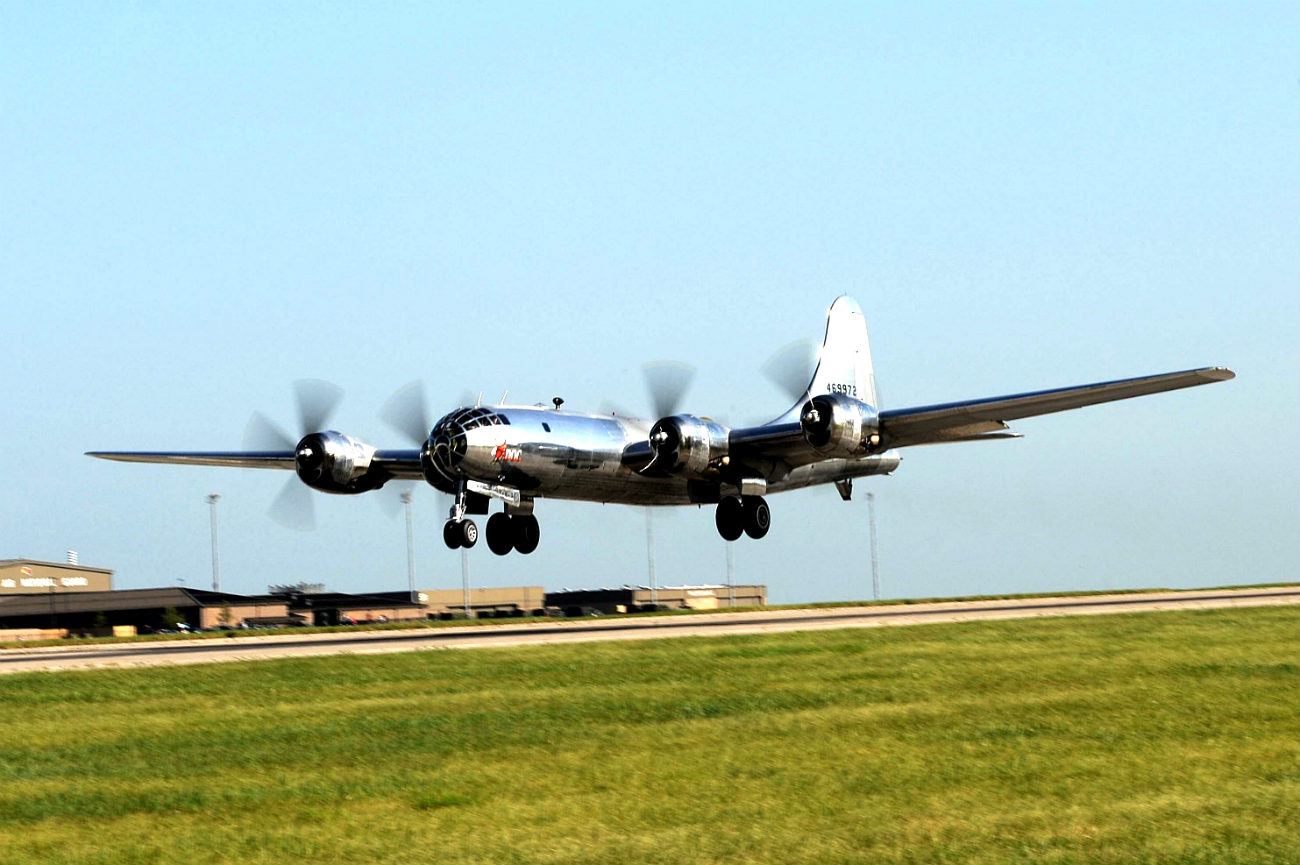
While fighter aircraft may be a bit more exciting, heavy bombers played crucial roles in the Korean War. The chief US bomber was the Boeing B-29 Superfortress, a propeller driven heavy bomber that rained down ordinance all over the peninsula. Born from the most expensive US research project of the Second World War, the B-29 had enough range to reach any target in Korea. The B-29 also made history during the conflict by delivering some of the first guided munitions used in combat. This technological leap was a forbearer of things to come.
Grumman F9F Panther

As the Korean War progressed, all parties involved saw the need for an effective ground attack aircraft. For the US Navy and Marine Corps, they found it in the Grumman F9F Panther. Developed in the 1940s and serving through the end of the 1950s, the F9F proved to be a powerful tool for supplying close air support. Armed with four 20mm cannons and an assortment of air-to-ground munitions, the nimble fighter could deliver its payload wherever it was needed. Given that the F9F was Grumman’s first foray into the world of fighter jets, the Panther’s achievements are especially admirable.
North American P-51 Mustang
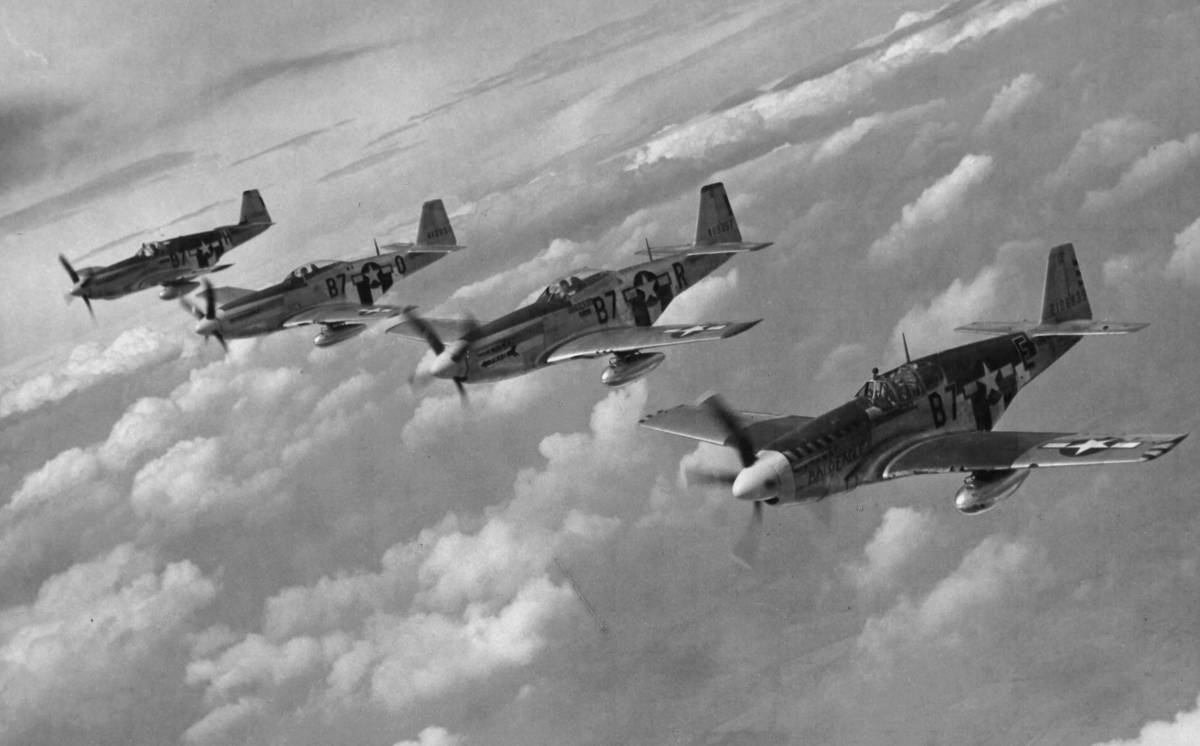
The P-51 Mustang was the US’s premier fighter of the Second World War. But that wasn’t the end of its story. The P-51 would go on to be one of the top Korean War aircraft as well. As with its service during World War II, the P-51’s versatility was its strength: it acted as an interceptor, a reconnaissance aircraft, a close air support/ground attack aircraft, and a rocket and bomb platform. While the Korean War was the last hurrah of the P-51 Mustang (and of propeller driven fighters in general) the illustrious aircraft went out with flying colors.
Lockheed P-80 Shooting Star

The first jet fighter used by the US Air Force in combat, the P-80 Shooting Star was a milestone in aviation history. The Shooting Star was also subject to one of the fastest development processes in history. The aircraft only took 143 days from the start of the design process till the first flying aircraft. Ultimately, the arrival of the P-80 Shooting Star did a great deal to turn the tide of aerial warfare in the favor of the US and its allies during the Korean War.
Douglas A-26 Invader
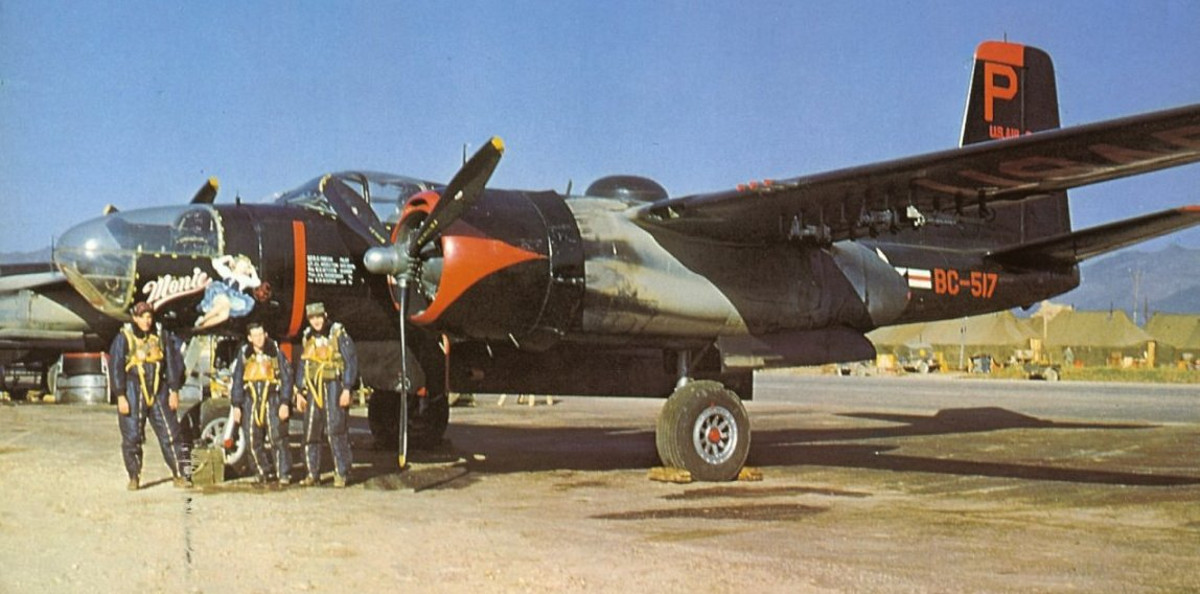
The other great bomber of the Korean War, the Douglas A-26 Invader was a powerful tool in suppressing ground forces and destroying critical enemy infrastructure. A unit of Invaders based in Japan was among the first US air power components to enter the war. Their record over the next two years is still impressive. With over 15,000 stories flown, roughly half of them at night, the US Air Force only lost 85 A-26 Invaders to enemy action. Able to carry up to three tons of bombs, the A-26 was the prefect bomber for the mission.
Vought F4U Corsair
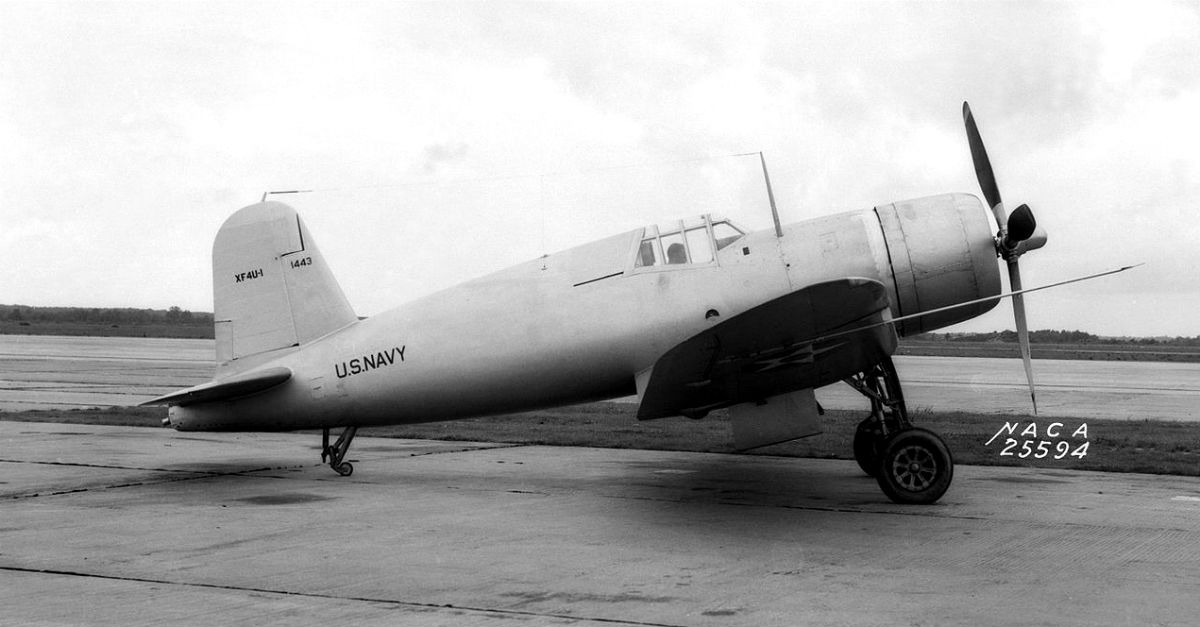
Another WWII era prop driven fighter-bomber, the Vought F4U Corsair was already a legend before it entered the Korean War. A robust airframe capable of soaking up huge amounts of damage, the Corsair was one of the fastest propeller aircraft in a power-on dive. In fact, speeds under those circumstances would approach the sound barrier. In its new role as a ground attack aircraft during the Korean War, these strengths ensured its combat effectiveness under challenging circumstances. Equipped with bombs, rockets, and cannons, the F4U Corsair was a formidable foe for any enemy ground forces for the first few years of the conflict.
Grumman F9F Cougar

Introduced during the Korean War, the Grumman F9F Cougar is a refinement of the F9F Panther. In further developing the F9F, Grumman built on the lessons learned during the conflict in Korea while also incorporating advanced aerodynamic and weapons aspects into their new aircraft. The chief difference is the new swept-wing design. This offered higher performance as well as a narrower profile for more efficient carrier based operations. Add in more robust engines and advanced avionics, the F9F Cougar was a big step forward for both Grumman and for US airpower.
Sikorsky H-19 Chickasaw

While the military helicopter would come into its own in Vietnam, the Korean War saw a few rotary wing aircraft that played a key role. The Sikorsky H-19 Chickasaw was the most prominent of these. It served a variety of roles during the course of the conflict on the Korean peninsula. Providing troop transport, medical evacuation, resupply, and other utility duties, the Chickasaw proved to the US Army how invaluable helicopters could be during a prolonged ground conflict. The H-19 Chickasaw remained in service for decades in both military and civilian life around the world.
Lavochkin La-9
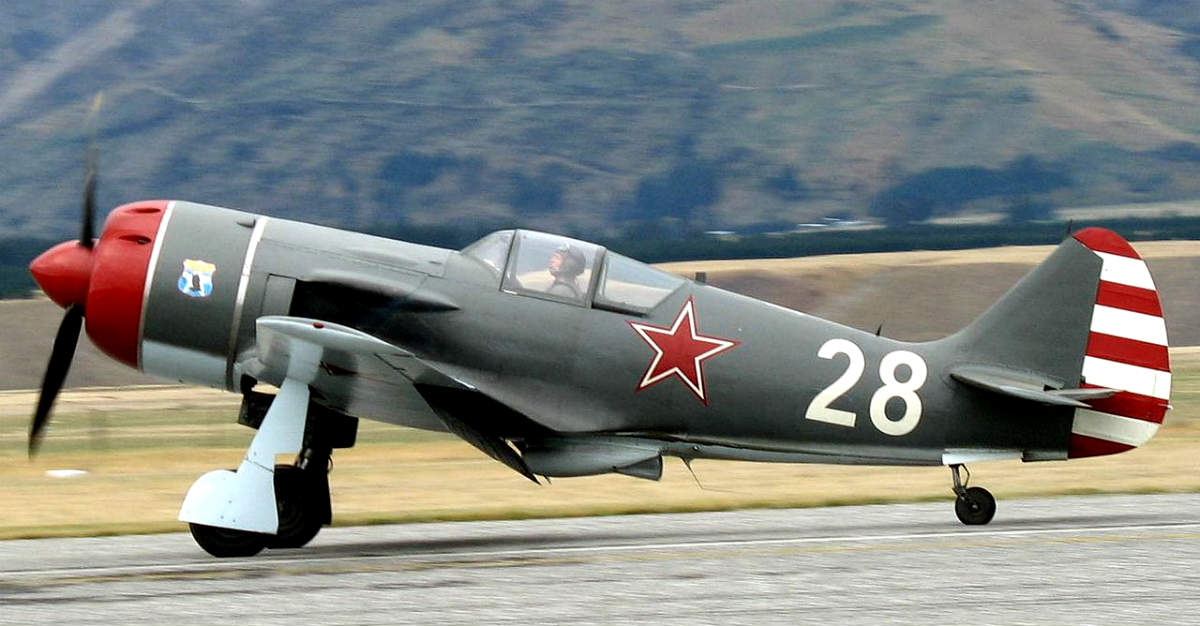
The Soviet made Lavochkin La-9 is one of the last propeller driven fighters of the Second World War. Designed during the conflict with production beginning in 1946, the La-9 would not see combat until the early days of the war in Korea. Many attempts were made to modernize the design, including the use of experimental supplementary jet engines. And while the La-9 did perform well in both ground attack and interceptor roles, it was gradually phased out as the MiGs became available.
Now see iconic aircraft of the Vietnam War.

